Arthrosis or osteoarthrosis of the knee joint is a disease that occurs in the context of distributing changes with the subsequent growth of connective tissue.There are many factors that affect the development of the disease, but all of them finally lead to a violation of metabolism in the cartilage.In medical literature, the osteoarthritis of the knee joint is called gonarrosis.
According to statistics, gonarrosis occupies a leadership position in the frequency of occurrence among other osteoarthritis.The disease brings serious discomfort, which can become pain when walking and rest.
The knowledge of the first symptoms will help to suspect the development of pathology and cure it in the initial stages.
Reasons
According to the medical classification, there are primary and secondary gonarrosis or osteoarthritis of the knee joint.
The osteoarthritis of the knee joint can occur in the context of several diseases or act as its complication.When, due to a unclear record or a clinical picture, the exact cause cannot be established, gonarrosis is called primary, but if the cause is known, then said osteoarthritis is called secondary.
Arthrosis develops with age in almost all people, on average, this period begins after 45-50 years of life.
The course and pathogenesis of primary and secondary osteoarthritis are the same and do not depend on the cause of the occurrence.
The most common causes of osteoarthritis and osteoarthrosis of the knee joint are:
- traumatic damage to the knee;
- joint and out joint deformation;
- shortening of a lower limb;
- abnormal hypermovility of the joint;
- Condroblast dysplasia;
- Cartilage calcinosis;
- femur and warm osteomyelitis;
- rheumatoid arthritis or arthritis of any other etiology;
- glucose metabolism;
- Metabolic diseases and hormonal diseases.
InjuriesAfter receiving the knee injury in the joint cavity, inflammation can be developed with a large alliteration approach.After the disappearance of pro -inflammatory agents, repair or osteoarthritis processes are activated.
Most of the time, the disease occurs at the bottom of a fracture with a rupture of ligaments and damage to the bag and the surface of the joint cartilage.
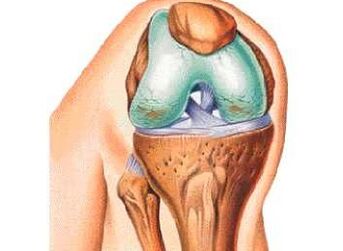
Congenital deformations.Valgo or varied deformation is very often and without adequate correction can be complicated by sclerotic changes in the knee.This happens due to the fact that one of the knees falls more than the burden of what it should be.
Shortening of any of the lower extremities.In addition to the deformations, in the pathogenesis of the development of the disease, the inappropriate distribution of weight in the knees plays paper.
Knee hypermor.In this state, the wear of the cartilage tissue of the knee joint can occur with the subsequent degeneration and degeneration in osteoarthritis.Hypermorsion often leads to spontaneous dislocations and sprains of the articulation capsule.
Hand hand dysplasia.Due to the inappropriate development of the motor surface in the knee joint, there is a pathological growth of the connective tissue.
Articulation calcinosis.Pathogenesis is based on the deposition of salts in the joint cavity and the formation of a specific precipitate, which causes calcification with subsequent osteoarthritis.
Osteomyelitis.Inflammatory bacterial disease in which the destruction of bones and joints occurs.First, anquity are formed and only then sclerosis.
Arthritis of any etiology.The most dangerous are rheumatoid arthritis, accompanied by autoimmune lesions of the heart and joints.
Diabetes, such as metabolic disorders, leads to a violation of nutrient flow in the joint and cartilage outbreak.
Obesity.With great body weight, there are large loads on the knees when walking and standing.As a result of constant pressure, blood flow to the knee joints decreases and develops atrophy with dystrophy.
Symptoms
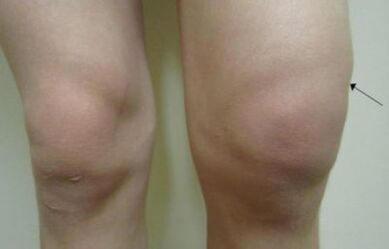
The symptoms with osteoarthritis of the knee joint depend on the stage of the pathological process.According to this, analyzing the symptoms and the rhythm of its growth, you can evaluate the scale of changes in cartilage tissue.
Symptoms of knee osteoarthritis:
- the presence of pathological sounds during movement;
- pain after load or rest;
- Reduction of functions;
- edema and joint increase;
- pathological dislocations, fractures and subluxation;
- Temporary Jamming that can occur when the flexion and extension of the joint.
The click and crunch are not immediately noticed, and if they realize, they do not pay due attention.Pathological sounds find the idea that a pathological process with the deposition of salts or the formation of osteophytes occurs in the cartilage gap.
Pain occurs due to the formation of calcinates or osteophytes.At first, pain syndrome is not expressed, then it appears only in the morning and passes after lunch, with the progression of the disease, pain can occur at rest.
A decrease in joint functions is manifested in the rigidity of the movements and a decrease in their breadth.Depending on the stage, the restriction of the movements can last a certain time and spend at rest.
Edema occurs due to the inflammation and hypersecretion of the synovial fluid.There are also options when the skin inflames the joints.Such symptoms can be with scarletin or rheumatism.
Dyslocations and subluxation occur because of the reason that the process applies to the bones and ligaments of the knees.
Rubor is a condition during which the movement in any axis is completely limited.Such symptom indicates the negligence of the process and the need for complex treatment.
Degree of osteoarthritis
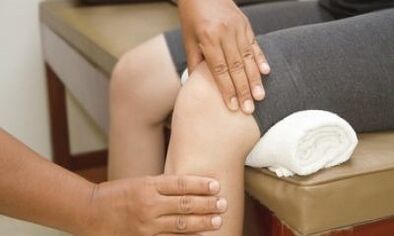
Classify osteoarthritis according to the following signs:
- radiological symptoms;
- clinical manifestations;
- Laboratory data.
The most common and convenient classification is radiological, it is simple and understandable even for people without medical education.
X -ray based, four degrees of osteoarthritis are distinguished in the knee joint:
- The reduction of the joint gap is small, and there are no osteophytes;
- The interptent gap does not accelerate, but there are signs of small calcination or osteophytes;
- The interptent gap has a narrow expression, there are osteophytes, joint deformation begins;
- Lack of articular gap, bone deformation, ankyous and dystrophy.
With respect to the clinical picture, the following stages are distinguished:
- Mild grade symptoms are insignificant, they occur in the morning and spend 30-60 minutes after waking up;
- The average degree is a pronounced symptom, the sensation of discomfort passes before lunch, swelling is insignificant, progresses rapidly without treatment;
- A severe degree, characterized by constant painful pain, the discomfort in rest, morning stiffness does not happen until dinner, ankylose, burgis and sinusitis of the knee joint develop.
Laboratory tests are taken into account, soybean and leukocyte indicators are evaluated.It is also necessary to verify the presence of a rheumatoid factor.
Diagnostic methods
The diagnosis of osteoarthritis of the knee joint is not complicated, but requires certain doctor's skills.
Two types of diagnostic measures are distinguished:
- laboratory diagnosis;
- Instrumental diagnosis.
For the correct diagnosis, each of the methods must be taken into account and analyze the image as a whole.
Laboratory
If osteoarthritis is suspected, the doctor who attends prescribes the following tests:
- General blood and urine test;
- biochemical blood analysis;
- Determination of antibodies against rheumatoid factor;
- Determination of antibodies to their own cells.
Laboratory data does not carry out information about the disease development stage.
Instrumental
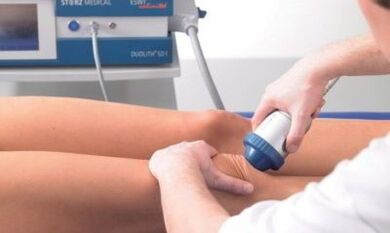
The instrumental diagnosis of osteoarthritis includes the following methods:
- radiography in two standard projections;
- minimally invasive arthroscopy;
- UZD exam;
- CONNECTICUT;
- Magnetic resonance;
- Scintigagmy (as indications).
The radiation diagnosis aims to determine the changes in the joint and to evaluate the condition of the cartilage.
Treatment
The treatment of the osteoarthritis of the knee joint is a long process.The duration of treatment is due to the fact that the repair of cartilage tissue occurs very slowly, and in some cases it is completely impossible to restore the joint.
Modern methods to treat osteoarthritis in the knee joint include comprehensive measures that aim to eliminate inflammation, normalize lifestyle and improve cartilage tissue metabolism.
There are such therapy methods:
- Pharmacological therapy;
- Exercise and massage therapy;
- popular medicine;
- surgical interventions.
The doctor prescribes the treatment based on the duration of the disease, the stage of its development and clinical manifestations.
Medications
Pharmacological therapy aims to alleviate pain and inflammatory reaction.For this purpose, the following medications are prescribed:
- non -steroidal anti -inflammatory;
- condoprotectors;
- glucocorticoid;
- cytostatic
Tablets of the osteoarthritis of the knee joint have many side effects, in the treatment it is necessary to monitor the state of the gastrointestinal tract and the kidneys.
Often, medications for osteoarthritis are prescribed for a long period, so the least toxic medications must be selected.
Ceremonies
The treatment of osteoarthritis using exercise therapy aims to strengthen the muscles and ligaments of the knee.With charges dosed in the cartilage of the sick joint, metabolism improves and regenerative processes accelerate.
Exercises should be selected individually taking into account the stage of patient disease and physical abilities.
Massage
The knee joint massage allows you to improve blood flow and relieve discomfort.The appropriate massage can avoid the appearance of ankylosis and false joints.
People
The treatment of osteoarthritis of the knee joint in the home should not be the main method to combat pathology, or can only act as an addition to the drug.
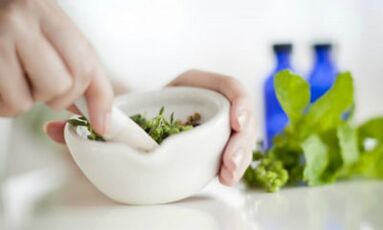
House treatment includes:
- decrease in body weight;
- Standardization of labor hygiene and compliance with the regime of the day;
- The fight against inflammation.
The anti -inflammatory effect is possessed by such herbs:
- Tincture of the thyme and the grass of San Juan;
- gross leaves;
- White cabbage leaves;
- Infusions and decoctions of dandelion and chamomile.
Operation
The operation is prescribed with the ineffectiveness of conservative therapy or at the patient's request.One of the main indications for surgical intervention is the fourth stage of the disease by radiological characteristics.
During the operation, surgeons can completely replace the Board with an endoprosthesis or change one of its parts.



























